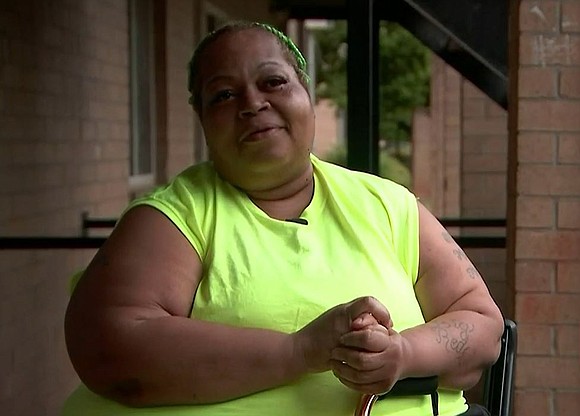‘I’m in pain’ | Woman wants CVS to apologize for giving her the wrong medicine
CNN/Stylemagazine.com Newswire | 5/11/2023, 9 a.m.

Originally Published: 11 MAY 23 09:36 ET
By Rachel Polansky
ATLANTA, Georgia (WANF) -- Imagine picking up a prescription at a pharmacy but being given the wrong medication.
It’s a mistake that can have dangerous consequences, but these types of medication mix-ups are not that uncommon, according to an Atlanta News First investigation.
Gradine Hector-Faison, 51, was prescribed oxycodone for her bad ankle sprain. Not thinking twice, she picked up the medication from her local CVS and began taking it.
“It didn’t ease the pain up but I was wide awoke. I waited a couple hours about six hours went by, I took another one, trying to ease the pain again and it never eased up,” Hector-Faison said.
After taking the medication without any pain relief, Hector-Faison called her daughter-in-law, who discovered the medication wasn’t oxycodone but Adderall.
Oxycodone is an opioid, often categorized as a downer. Adderall is an amphetamine, often categorized as an upper. Both are schedule 2 drugs.
Hector-Faison immediately called CVS but claims she got the runaround from her local pharmacy and from the corporate office.
“I’m frustrated, I’m upset, I’m in pain,” Hector-Faison said. “I just want what belongs to me. I want to ease my pain up. I want CVS to make it right. I want them to apologize for giving me the wrong medicine.”
The U.S. Food and Drug Administration receives roughly 100,000 medication error reports every year.
Medication errors reported to the FDA jumped from 16,689 in 2010 to more than 100,000 in 2018. And, these reports are voluntarily submitted – which means the numbers are likely higher.
“What’s reported to the FDA usually only accounts for 1 to 10 percent of what actually occurs,” said Dr. Randall Tackett, a clinical and administrative pharmacy professor at University of Georgia College of Pharmacy.
Dr. Tackett attributes most medication mix-ups to pharmacists’ workload.
Many of the people seen behind the pharmacist counter are technicians or support staff who cannot do everything a pharmacist can do.
“Pharmacists have to oversee all of those other people,” Dr. Tackett said. “That pharmacist has to answer questions from the patient. That pharmacist may have to be on the phone with the doctor, and that’s puts a lot of burden on the pharmacist.”
In an effort to minimize mix-ups, some states have limited the number of prescriptions a pharmacist can fill to 150 per shift. While Georgia does not currently have limits, Tackett doesn’t know if that’s the magic answer.
“You don’t want the pharmacist to [say], ‘I’ve met my quota and I can’t fill it,’” he said.
Tackett’s best advice for patients is simple: speak up. “If there’s any differentiation between what you think you should be getting, question the pharmacist,” Tackett added.
As for Hector-Faison, her wait is finally over and she is on the road to recovery. Atlanta News First Investigates emailed CVS on a Friday. By Monday, Hector-Faison received her correct medication and an apology.
A CVS spokesperson said the company is determining how this medication mix-up happened to ensure it doesn’t happen again. “Prescription errors are a very rare occurrence, but if one does happen, we do everything we can to learn from it in order to continuously improve quality and patient safety,” the spokesperson said.
Now that she’s taking the correct medication, Hector-Faison is urging pharmacists to double check every prescription they fill.
“Do not give the wrong medicine,” she said. “Other things could happen, worse than what it did to me. So, please be careful of what you do.”
Look at your medication before you leave the pharmacy. If you have any questions, talk to the pharmacist. Go to the same pharmacy. They’ll have all your medications on file and possible drug interactions. Know what medications you’re taking and what they’re used for. Rather than simply letting the doctor write you a prescription and send you on your way, be sure to ask the name of the drug and the purpose of the drug.









